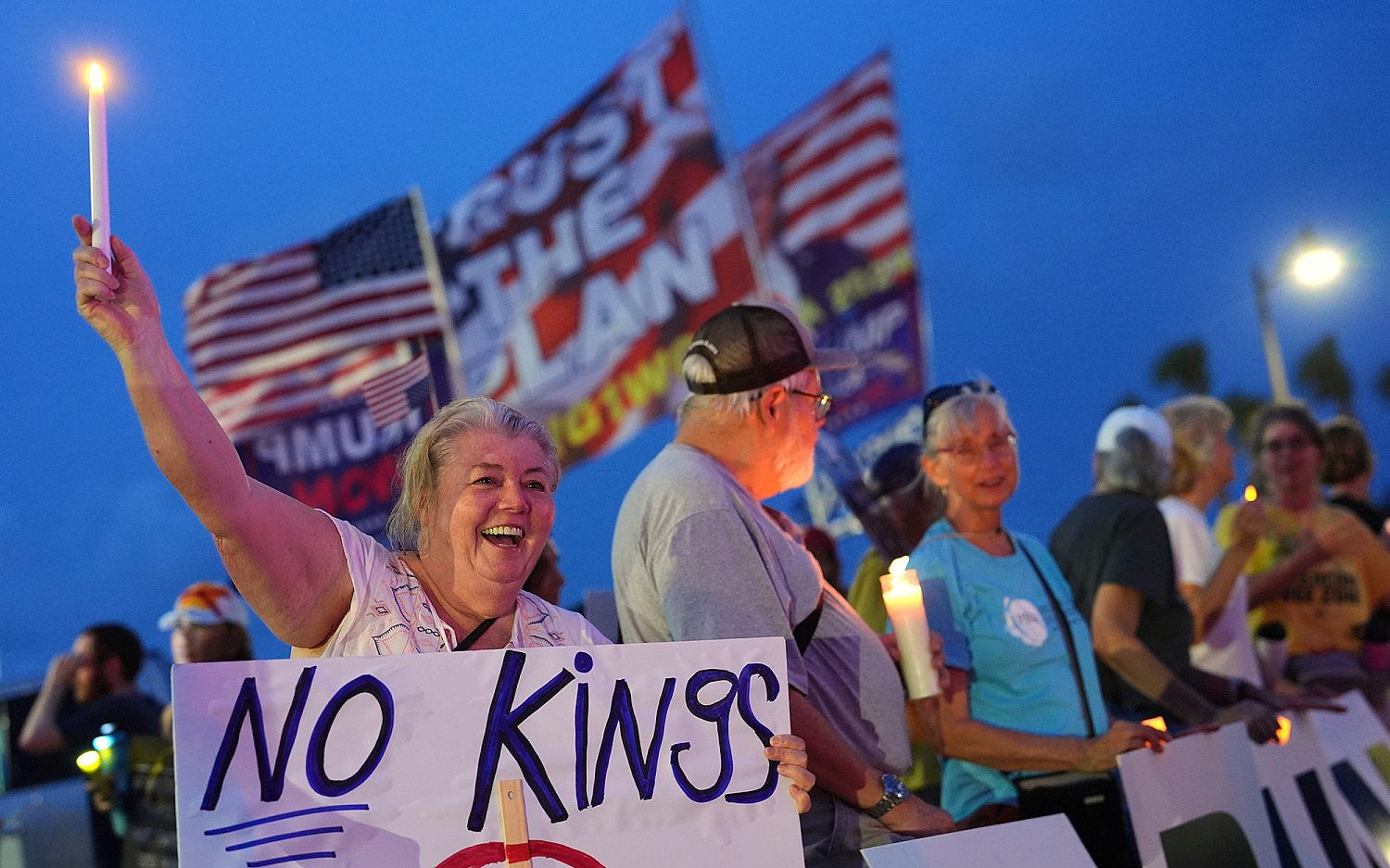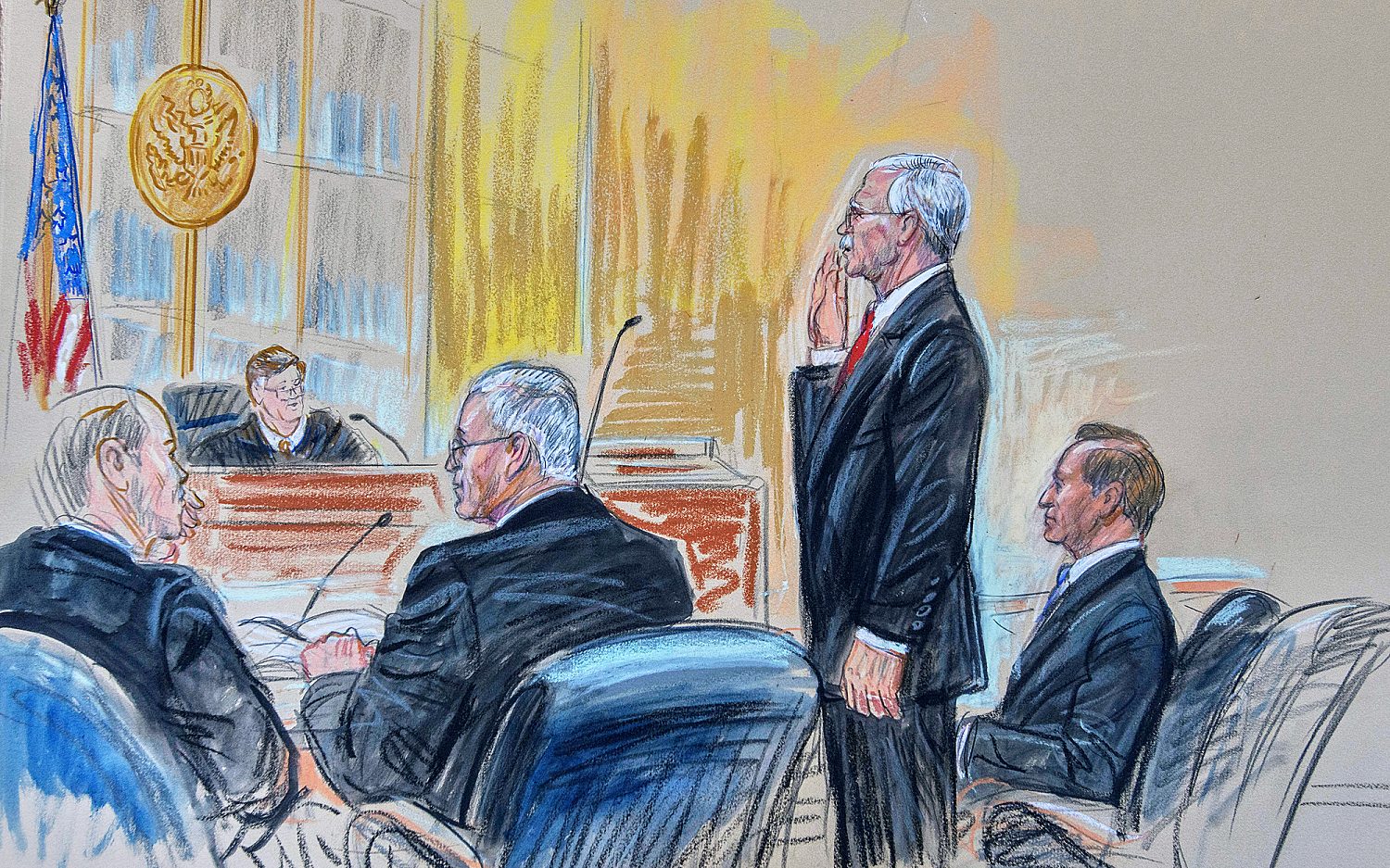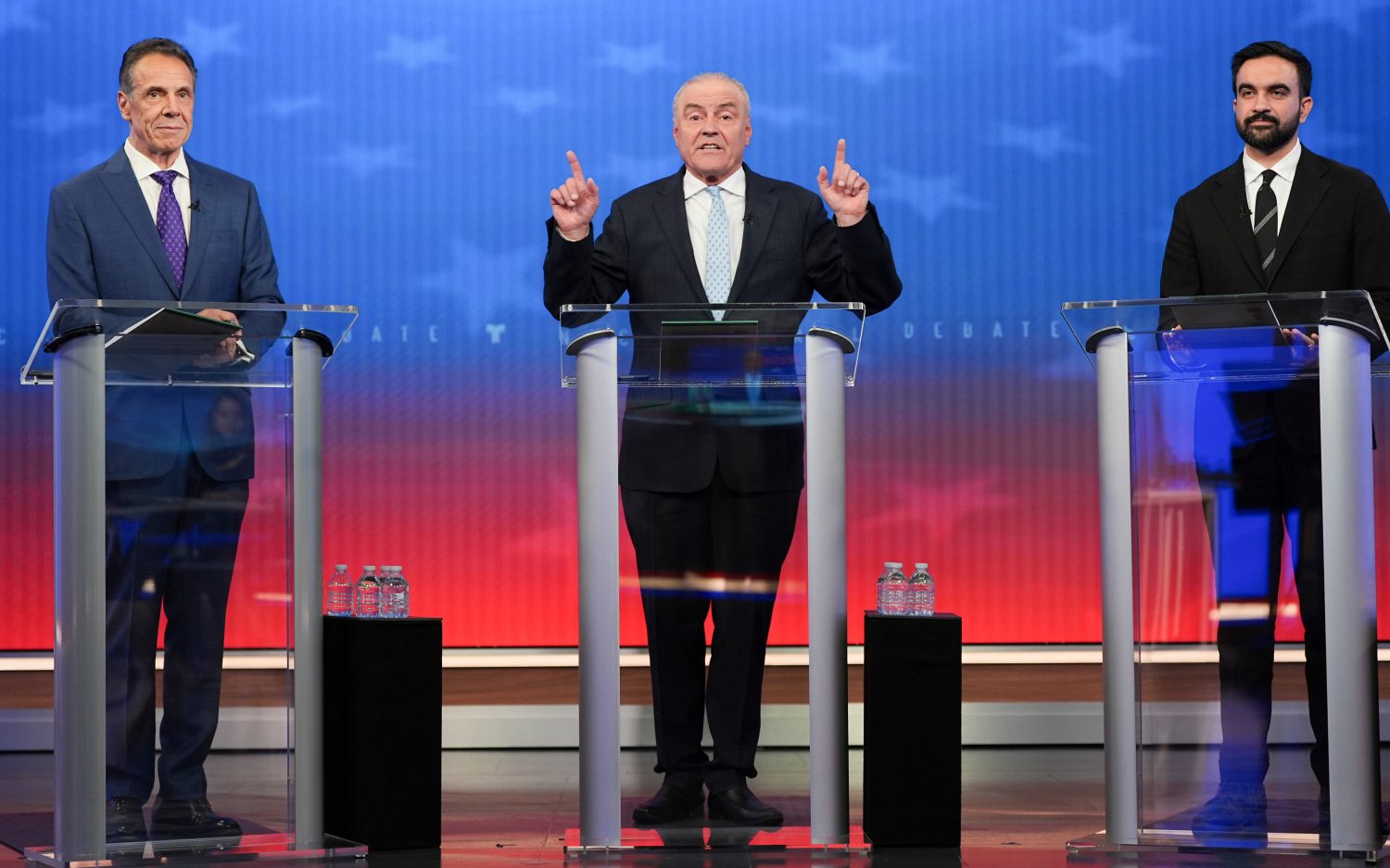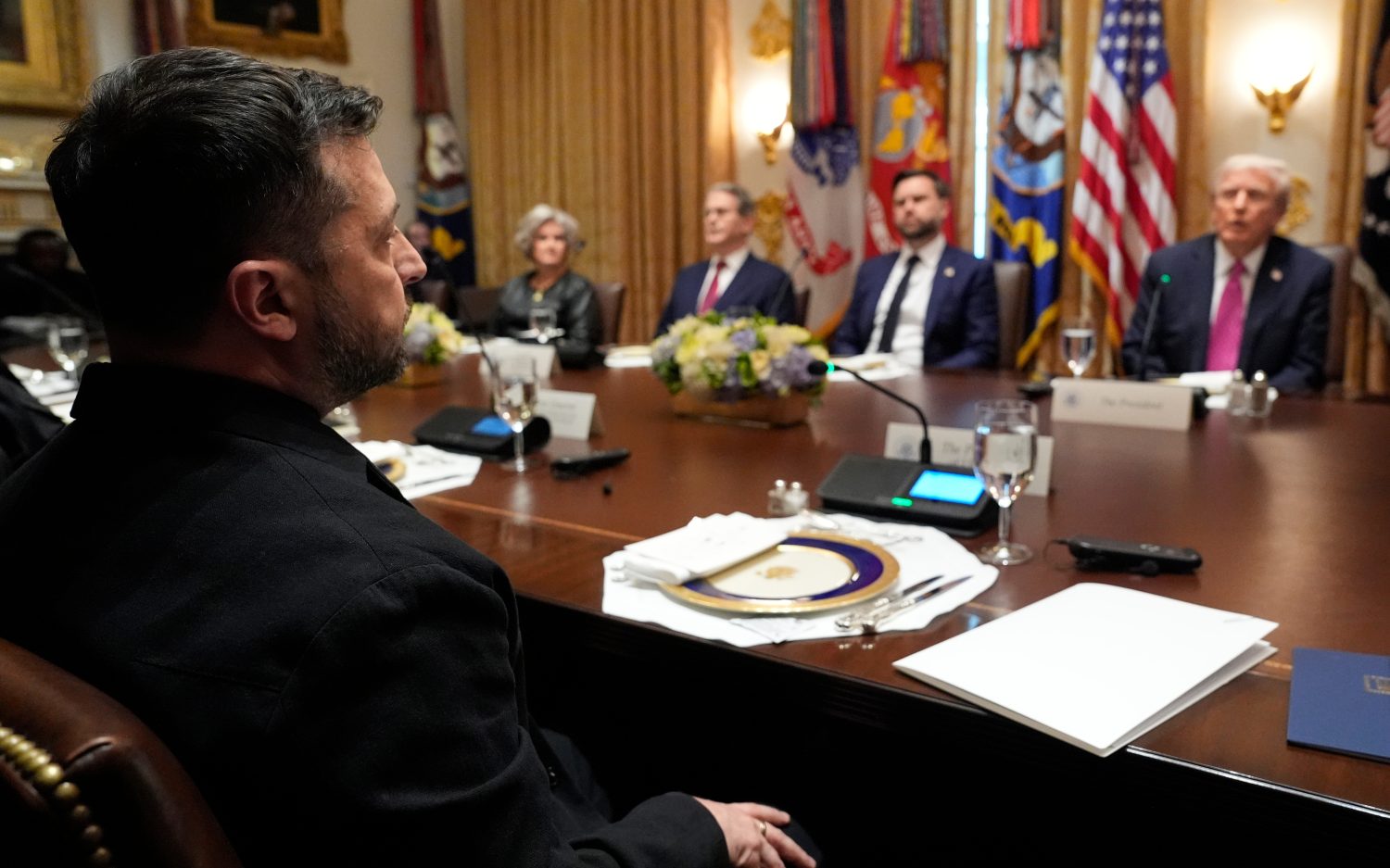What they're really saying in Ferguson
A walk down West Florissant reveals the hearts and minds of protesters and police
FERGUSON, Mo.—TV coverage of developments in Ferguson can make it seem like the entire population of 20,000 people is under siege, on fire, pinned down, or all three. But of Ferguson’s 6 square miles, the protests and unrest are confined to a stretch of West Florissant Road three-tenths of a mile long and five lanes wide. It starts in the parking lot of Family of Faith Missionary Baptist Church.
The house of worship stands immediately behind Ferguson Market and Liquor where, 10 days ago, Michael Brown allegedly stole a $50 box of Swisher Sweets cigars. Less than 15 minutes after that, the African-American teenager was dead in the street, shot at least six times by a white police officer.
The boarded-up, looted storefront of Ferguson Market and Liquor is next door to McDonald’s. Last week police arrested two reporters there. That was when the Ferguson police presence at protests was almost all white officers clad in riot gear.
These days, the man in charge stands out, but for different reasons. He wears no helmet, no body armor. But Capt. Ron Johnson of the Missouri Highway Patrol commands authority. On Sunday afternoon, Johnson walked the streets of Ferguson, working. He didn’t want to answer any of my questions, but he did allow me to walk with him as he led a group of officers through the protests.
He answered residents’ questions, including one about whether Ferguson Police Chief Thomas Jackson would be reprimanded for what residents view as an unprofessional response to the unrest in the town.
“That is not my choice,” Johnson said. “But I think you just express your voice, keep expressing your voice, for somebody to hear your complaints.”
Johnson is a local hero, in part because he grew up in the area. He shakes hands. He asks whether people are OK and poses for pictures. A man wearing a T-shirt reading, “Don’t fear, Grandpa is here,” had words of praise for Johnson.
“We want to thank you for being out here,” the man said. “We want to thank you for keeping things a little calm. We know you’ve got to do your job … but we know it’s a better job being done.”
Johnson gave advice, too: “Let’s just have a calm night, so as it gets later, if you’re out here just have a calm night.”
But nightfall brought more violence to West Florissant Avenue both Sunday and Monday. Even the presence of the National Guard on Monday night did not deter some protesters from throwing bottles, setting fires, and shooting off guns. Overnight Monday, Johnson said at a press conference, “Our officers came under heavy fire,” but “not a single bullet was fired by officers,” according to the St. Louis Post-Dispatch.
Johnson opened the news conference by having a chaplain offer a prayer for peace. He emphasized that the majority of people protesting in Ferguson are obeying the law. “These criminal acts came from a tiny minority of troublemakers,” he said.
During peaceful daytime protests in Ferguson, African-Americans in St. Louis shared their feelings of anger and alienation.
“St. Louis [is] in trouble if there ain’t no justice,” shouted Mark Blackmon of St. Louis. “Four hours [Michael Brown] laid there in the street. And his daddy got to walk up and see him, blood streaking from his head down the street.”
Christopher Young-El of the Commission Movement … an interfaith, non-partisan group, was handing out refreshments in the parking lot of the burned-out QuikTrip convenience store. Young-El said local authorities have a double standard of protecting their own.
“A lot of these people are upset because justice is a slow process,” he said.
Tamara King of St. Louis worried a new generation is growing up to believe no one cares about them despite the symbolic value of an African-American president in the Oval Office.
“You have these kids out here who think, ‘Nobody cares about us. No one’s paying attention to us. We don’t count for anything. You’re not listening.’”
King said she thinks education is the answer. For Raina Buchanan of St. Louis, it’s the right kind of education. She stood along the street with her daughter, holding a sign with a quote from Isaiah, “Come let us reason together.”
“We can unite as one race, God’s race,” Buchanan said. “Not as black, white, Chinese, but as one body in God’s eyesight.”
Listen to Nick Eicher’s report from the streets of Ferguson on The World and Everything in It:
Lynde Langdon contributed to this report.
An actual newsletter worth subscribing to instead of just a collection of links. —Adam
Sign up to receive The Sift email newsletter each weekday morning for the latest headlines from WORLD’s breaking news team.





Please wait while we load the latest comments...
Comments
Please register, subscribe, or log in to comment on this article.